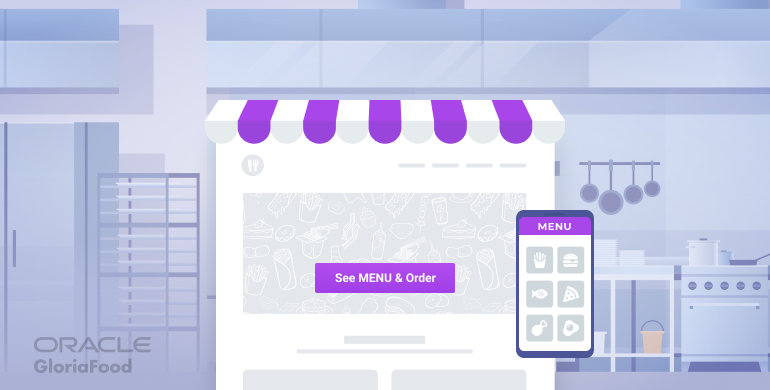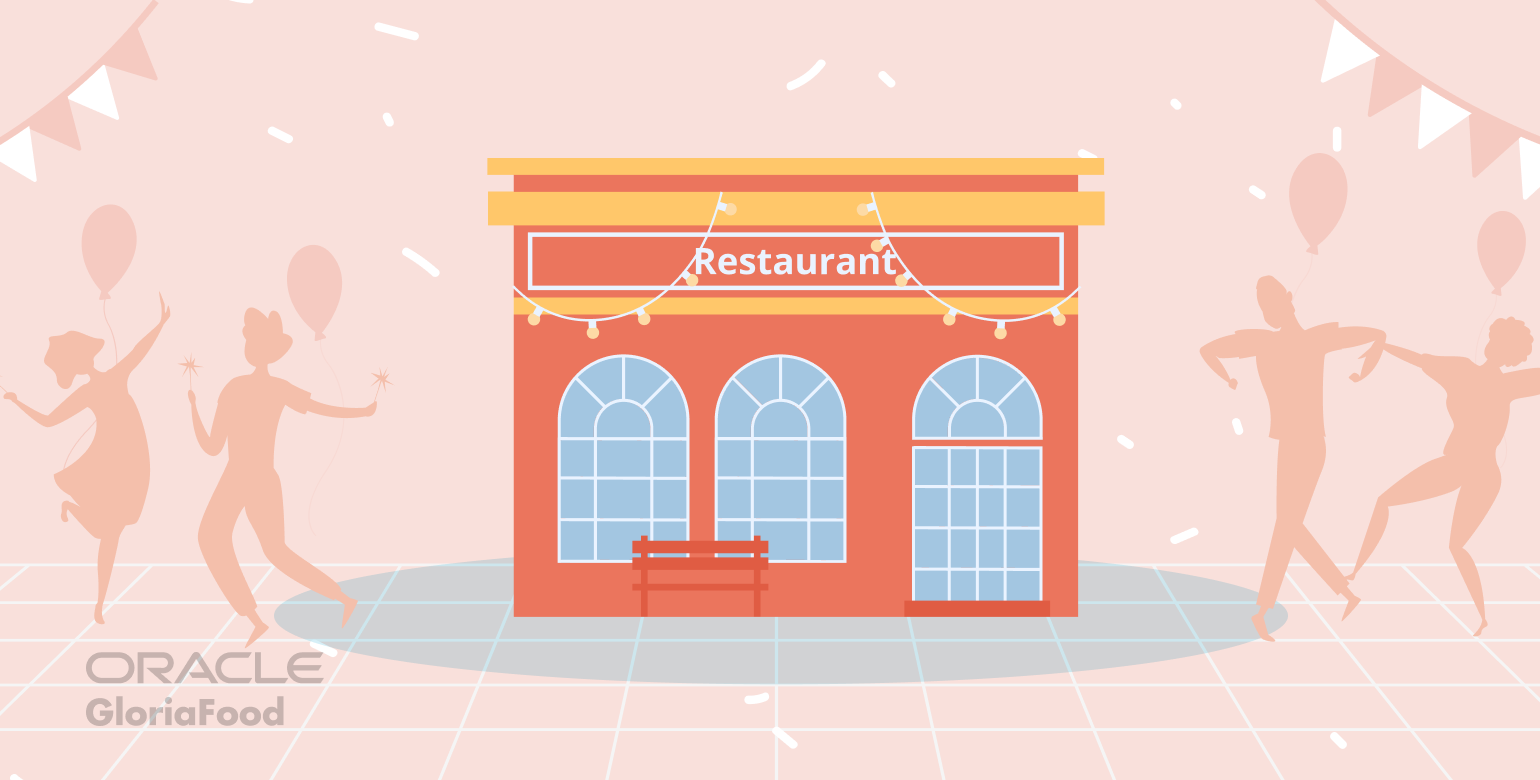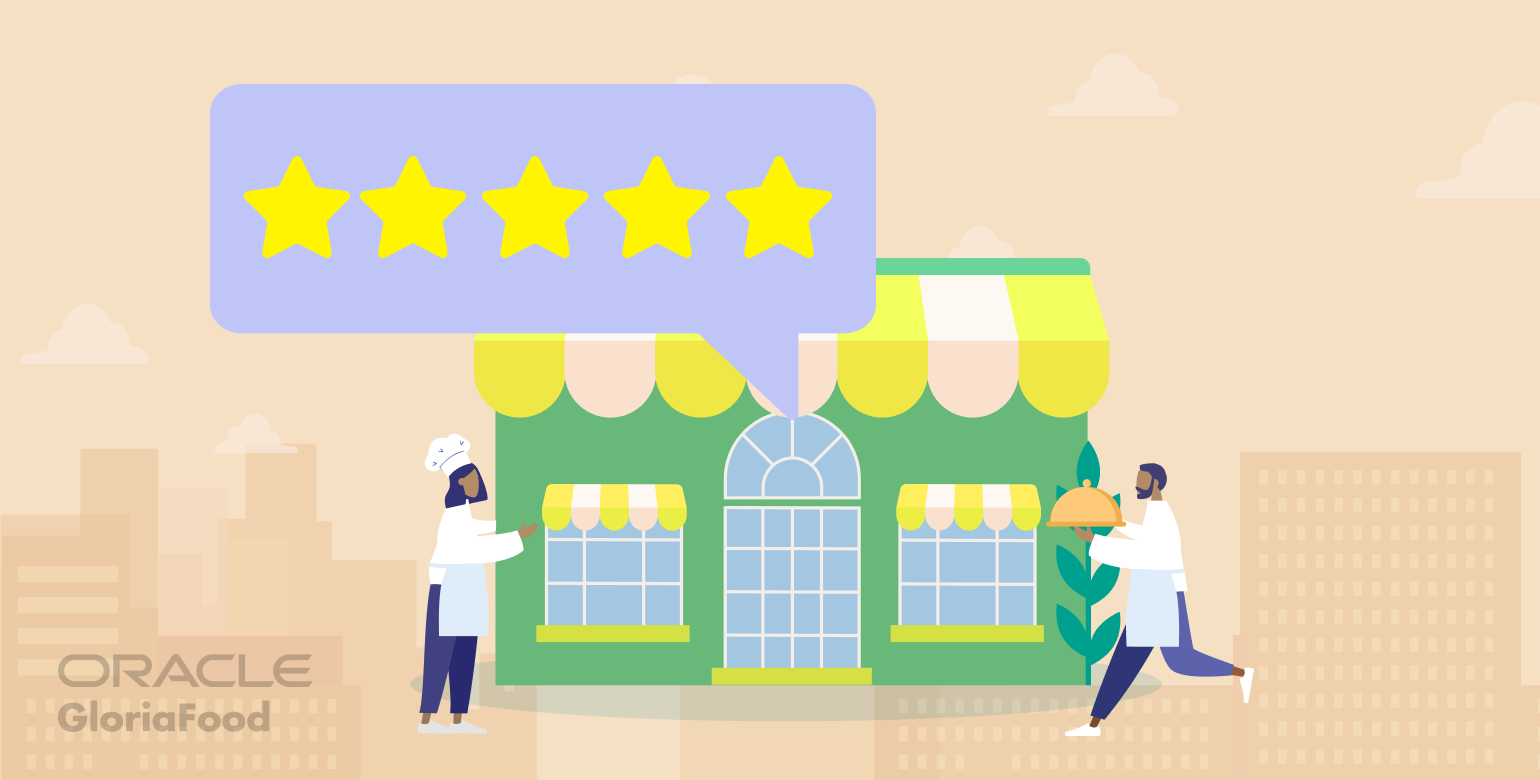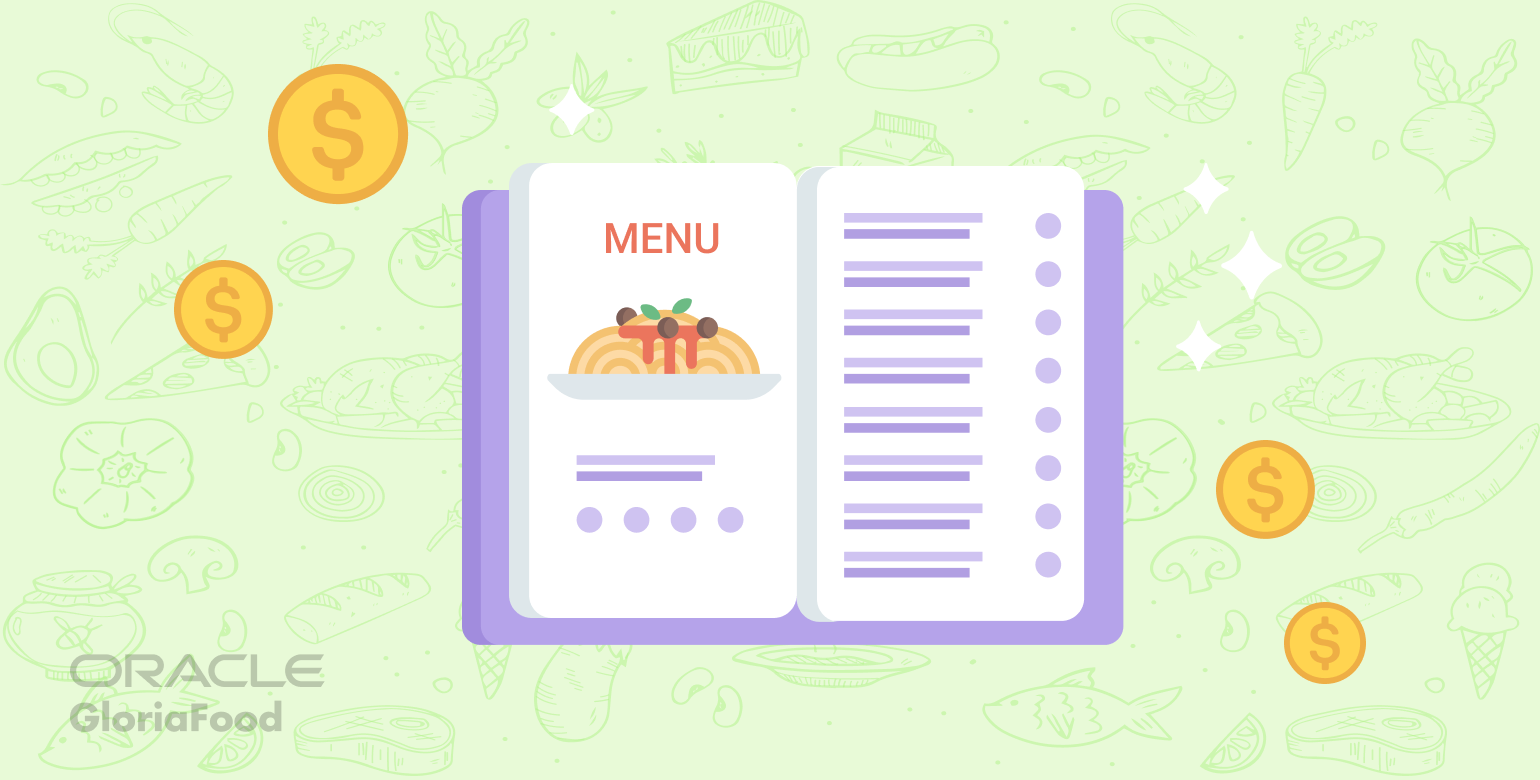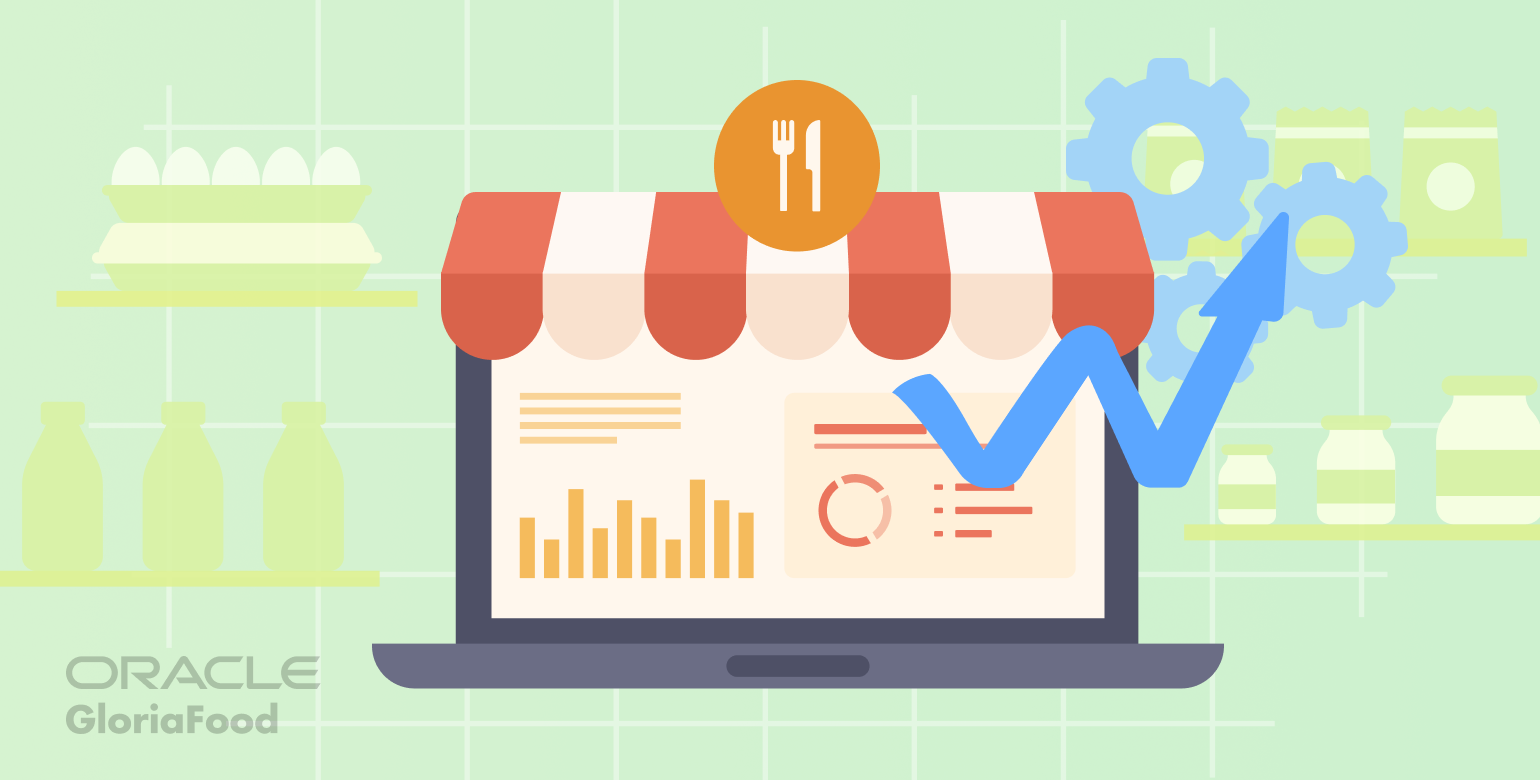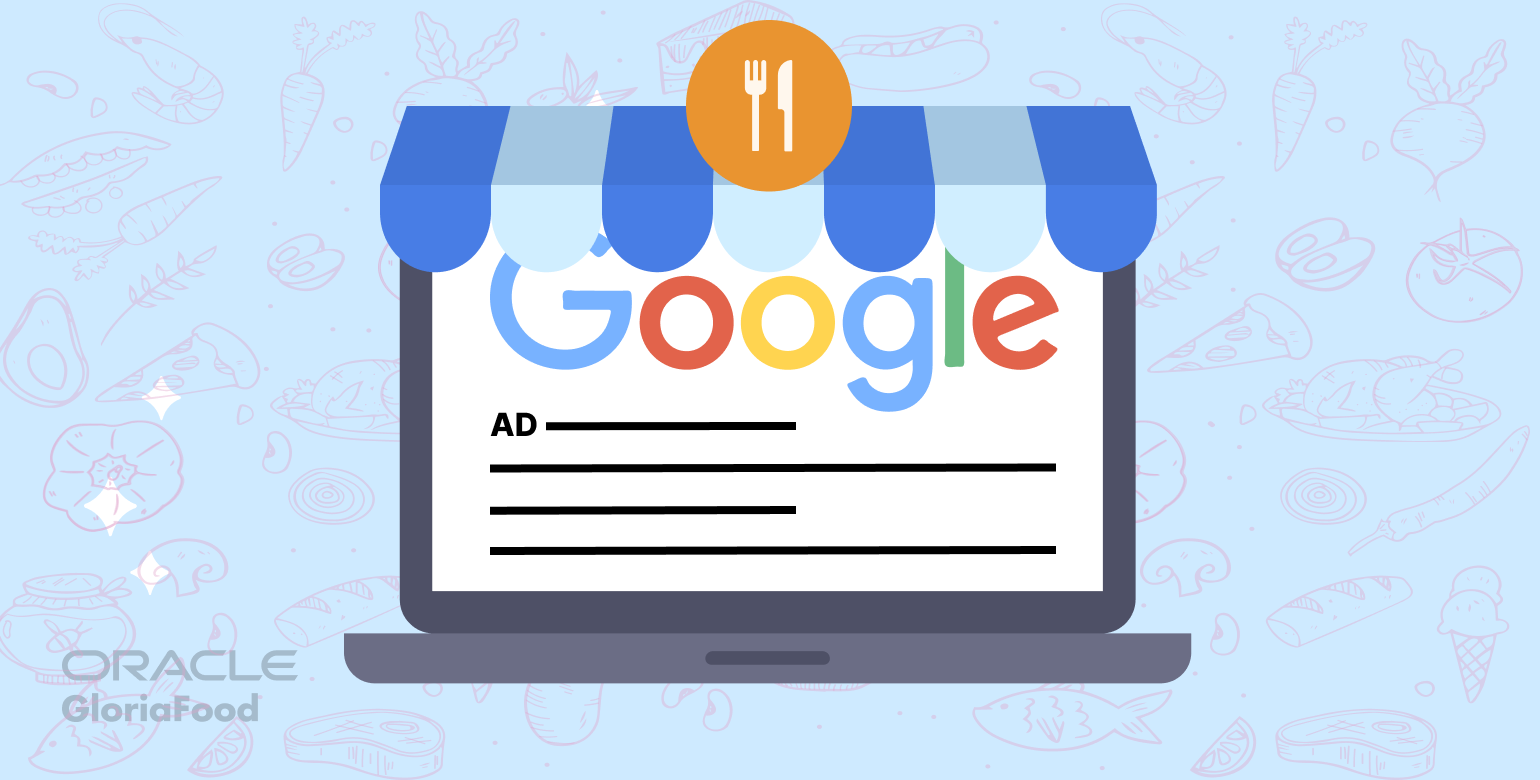- What Makes a Good Restaurant Website?
- Most Important Features of Restaurants’ Websites
- Good Restaurant Domain Name
- Restaurant Website SSL Certificate
- Fast Server Response Time
- Correct Restaurant Schema Markup
- On-Page Restaurant SEO
- Responsive Restaurant Website Design
- Optimized Order Online Button
- Quality Food Photography on Your Website and Menu
- Content that incites clients to order
- Directions to and a Map of Your Location
- Links to Social Media Accounts
- Job listings
- An “About us” section
- Get the Essential Restaurant Website Features to Help Your Business Thrive
Restaurant website features directly influence how much food your location sells. Websites have changed the way consumers compare their options and make purchases.
Before you decide where to have dinner on a Friday night, you probably use a search engine like Google to explore nearby options. But what should be on a restaurant website?
Despite the importance of websites with reliable features, restaurant website statistics show that a lot of small restaurants don’t have websites that meet their needs. Stop losing sales by learning what makes a good restaurant website and what are the 10 essential restaurant website features you need to have.
What Makes a Good Restaurant Website?
Why do you need a good website for a restaurant? A good restaurant business website needs to offer users a flawless, optimized browsing experience. This involves certain features that you cannot go without.
But don’t worry, you won’t have to spend a lot of time or money to add those features to an existing site. Even a simple restaurant website can bring more customers through the door and increase orders for delivery and takeout.
How do I make a good restaurant website? First, you need to understand the purpose of restaurant websites. Some of the best restaurant websites in the world focus on:
- Building a brand that customers trust.
- Ranking high in search engine results.
- Getting more people to visit their restaurant location.
- Increasing food sales.
- Educating potential customers about what the restaurant offers.
Once you know the purpose of a website, you can make a list of restaurant features that match those goals. To get you started, here are the 10 most important restaurant website features.
Most Important Features of Restaurants’ Websites
What makes a good food website? Some food website features matter more than others. In fact, you might even call them restaurant website requirements.
For example, you could include a video on your website that shows off your beautiful dining room or how you prepare the meals. Some people will love it, but it probably won’t boost sales unless you work in the high-end market.
You can think about adding extra features to your online restaurant website later. For now, focus on the most important aspects:
- Good domain name.
- SSL certificate.
- Fast server response time.
- Correct Schema markup.
- On-page SEO.
- Off-page SEO.
- Mobile responsiveness.
- Optimized “order online” button.
- Quality images on your website and menu.
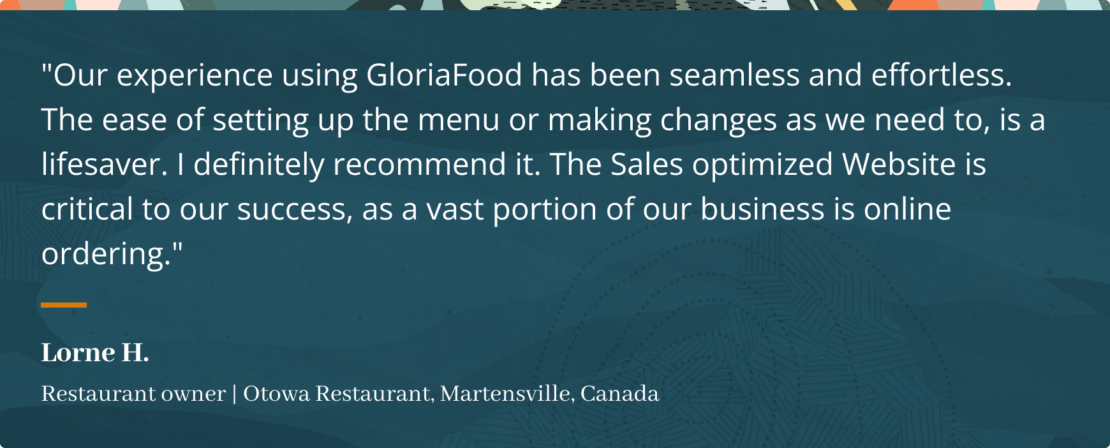
Good Restaurant Domain Name
What does a good restaurant domain name make? Well, first of all, it should be catchy and memorable so that customers will remember it. For instance, I will never forget the name of the restaurant Burgatory. It is witty, punny, and definitely memorable.
That being said, be careful not to make it overly complicated in your desire to stand out. Your restaurant domain name should be easy to remember and spell. Avoid double consonants or alternative spellings.
Get more customers & orders with our Sales Optimized Website
All our websites contain SEO properties that help you rank higher than your competitors.
Restaurant Website SSL Certificate
A secure sockets layer (SSL) certificate is mandatory for keeping both your business and your customers safe. It will make it significantly more difficult for hackers to steal your information and the customers’ payment info if you accept online payments. SSL certificates come in a wide range of prices but they are 100% worth the effort.
Fast Server Response Time
Did you know that more than 40% of shoppers leave a website that takes more than 3 seconds to load? When customers are hungry, you don’t want to keep them waiting.
Otherwise, they might encounter the dreaded Err_Timed_Out error message, which could turn them away from your page completely. Avoid this by ensuring that your server response time is fast, reducing the chance of such error messages popping up.
There are a lot of factors that slow down server response time such as web hosting, PHP usage, scripts, etc. Luckily, these are all things you can optimize in the restaurant website development process.
Optimizing server response time is a crucial aspect of developing software that ensures your restaurant website delivers a seamless experience to hungry customers.
Correct Restaurant Schema Markup
The Schema markup helps search engines learn more about your website, which can boost your SERP ranking. Not just that, but it also improves the user experience, because people who search for your restaurant will learn information about you at the touch of a button.
The Schema markup can be difficult to implement if you don’t have any technical knowledge, but we’ve prepared a guide to help you with that.
On-Page Restaurant SEO
Search Engine Optimization (SEO) is what can put you on the first page of Google. Needless to say, all restauranteurs should aspire to get their restaurant there. There are two main types of SEO you can do, on-site SEO, which is everything you do directly on your website, and off-page SEO, which involves everything you do outside of it.
In terms of on-page SEO, you can work on keywords strategy, image optimization, internal and external linking, and local SEO.
Responsive Restaurant Website Design
Did you know that 89% of dining research is done by mobile before visiting a restaurant? Nowadays, when people want to order food or look for a restaurant, they do so on their phones, often on their way back from work.
This means you can’t afford your restaurant website not to be optimized for mobile devices. This is especially true for restaurant menu website design. What a responsive restaurant website design does is make sure your website looks great no matter the device you look at it from.
If someone can’t read your menu on a small screen, then that person will probably dismiss your restaurant. Plenty of your competitors already use responsive website designs that look great on any device.
As an additional bonus, search engines also love responsive websites. By choosing a responsive food website design, you make it much more likely for your restaurant to get a better Google ranking.
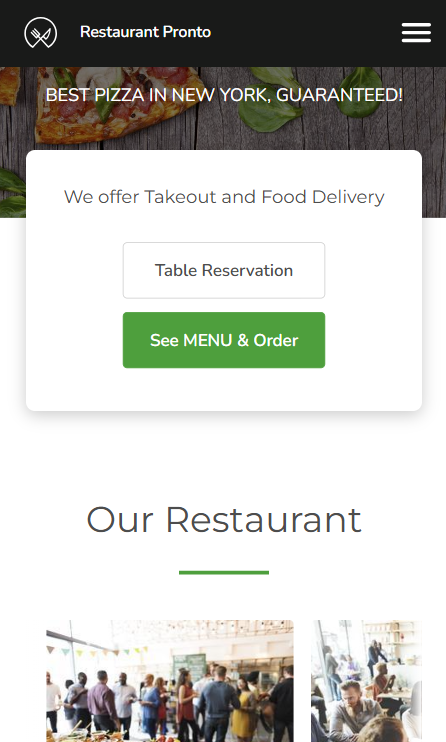
Optimized Order Online Button
When you think about what to include in a restaurant website, you need to put online ordering and reservations at the top of the list. Some of your customers might prefer calling your restaurant to place orders or reserve tables. Millennials and other young people, however, dislike phone calls. They prefer using texts and apps to communicate.
You might balk at the idea of building an app for your restaurant. However, you can solve this problem by simply adding an online ordering page and button to your website. Once you add your menu, you give customers the opportunity to order food in a way that’s convenient for them.
Did you know 67% of consumers prefer to place a food order using a restaurant’s website or app? If you don’t offer food for delivery and/or takeaway, you should consider it ASAP, especially in these trying times when a lot of restaurants aren’t allowed to open and people prefer to order food online.
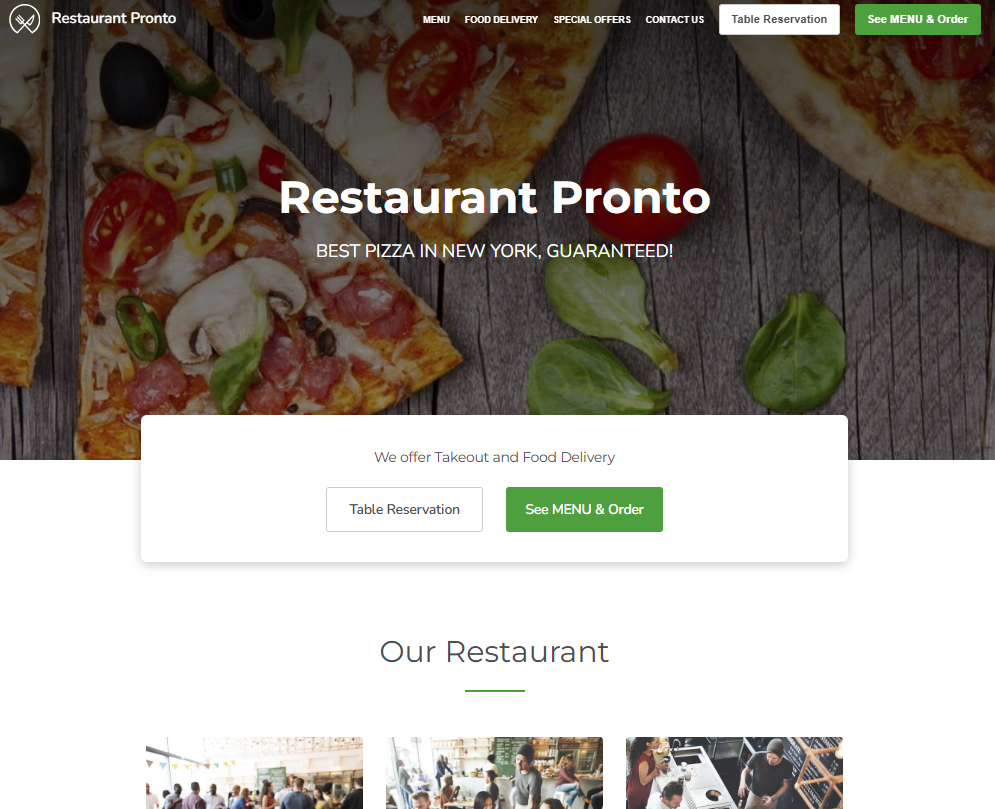
But in order for the customer to have a pleasant ordering experience, the order button should be highly visible, on your homepage, above the fold, and sticky.
Watch this video tutorial to find out how to make a restaurant website that encompasses all these features. The steps are so easy to follow that they can be done within a few minutes.
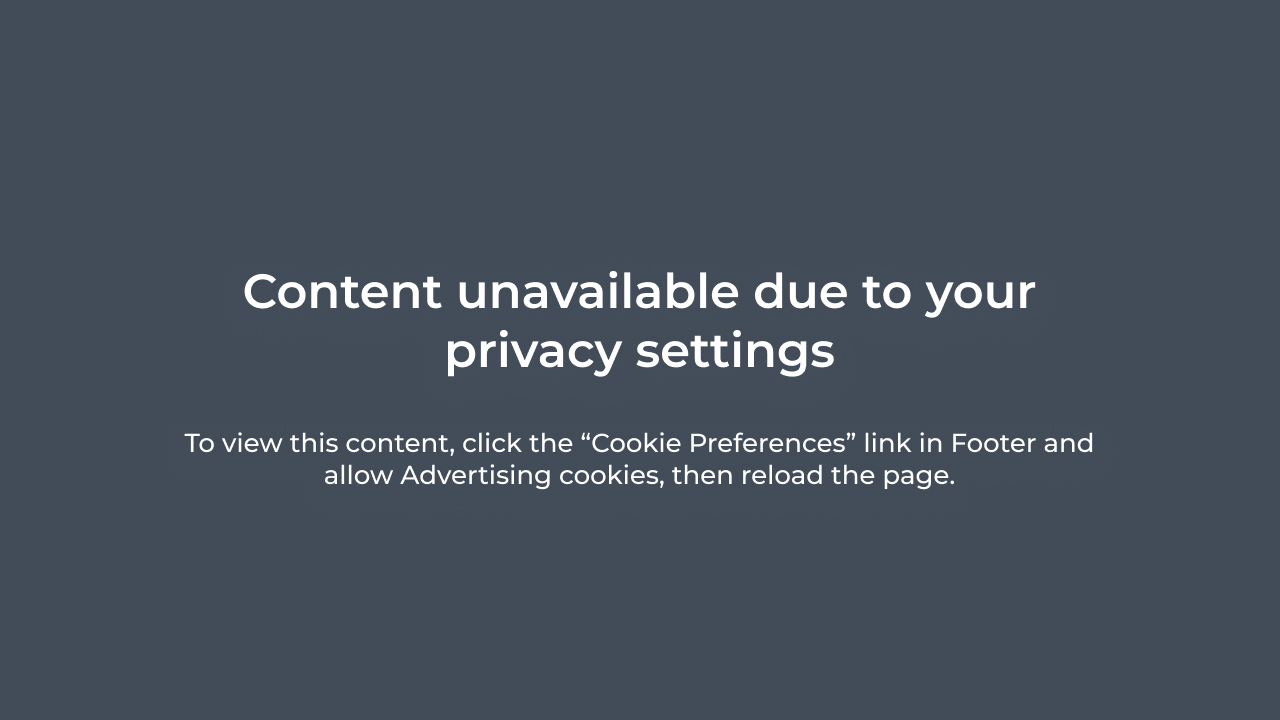
Quality Food Photography on Your Website and Menu
The images on your restaurant website should have the sole purpose of making customers drool and motivating them to place an order or reserve a table. With that in mind, consider investing in a professional photoshoot that is guaranteed to highlight the best your food and restaurant have to offer.
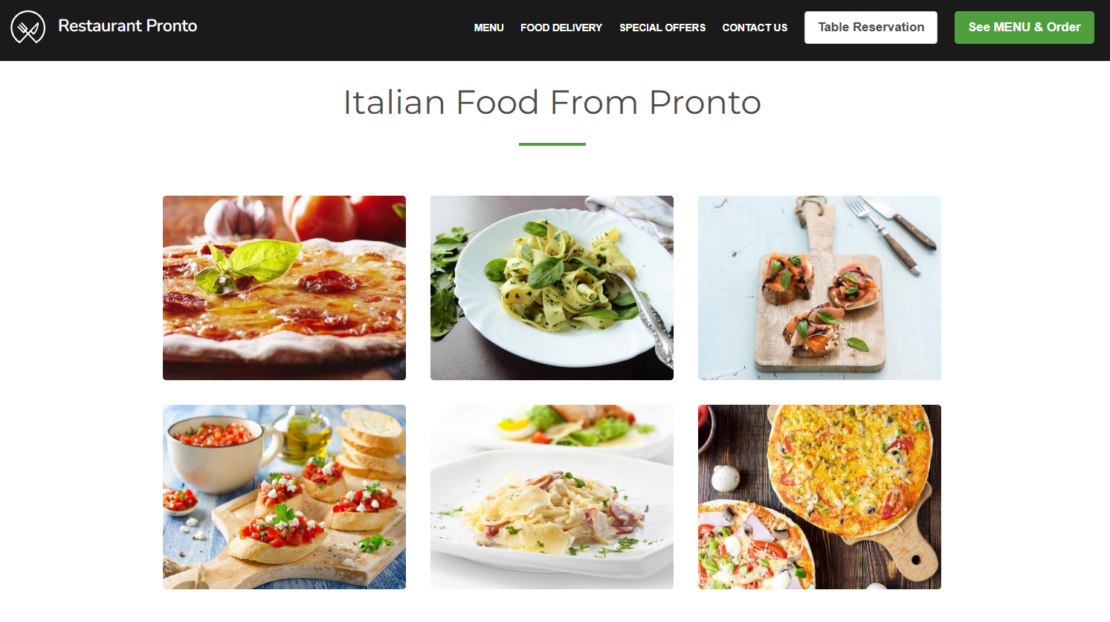
Content that incites clients to order
A picture may be worth a thousand words, but a restaurant website should be a uniform mix of mouth-watering food photography and encouraging words that persuade visitors to take the big step and become clients.
Every piece of content for the restaurant website, be it menu button, restaurant description or title, should contain strong call to actions that tell people what they should do. For example “See Menu & Order” or “Check the menu to see amazing dishes at reasonable prices”.
Furthermore, your restaurant website content should be optimized with relevant keywords for your cuisine to help you rank high in Google searches and make your business more visible to potential customers.
Directions to and a Map of Your Location
Your restaurant website needs a page that includes a map of your location and directions on how to get there. A location page will make it easier for new customers to find you.
Google and other search engines also like to see location information on websites. When you post information about your location, phone number, and directions, you make it easier for your website to get a higher ranking.
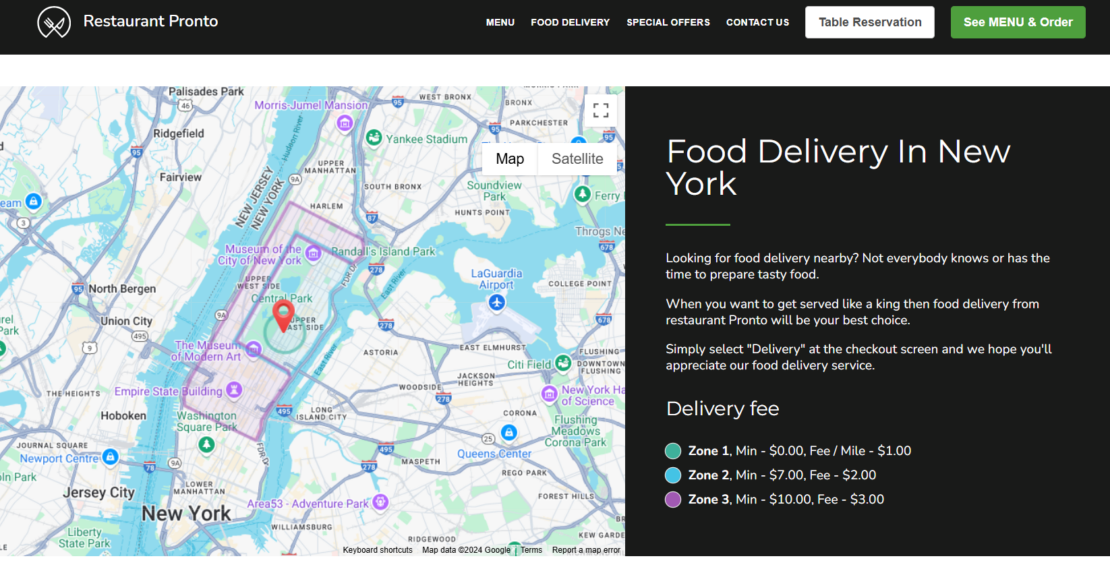
Links to Social Media Accounts
Most of your public outreach probably goes toward social media accounts on platforms like Facebook, Instagram, and Twitter. Social media for restaurants is an amazing tool to interact with customers. For example, you can share positive reviews and photos taken by your patrons.
You can also use social media to address negative reviews. If someone has a bad experience at your restaurant, you want to take control of the situation by addressing the issue head-on and finding a solution.
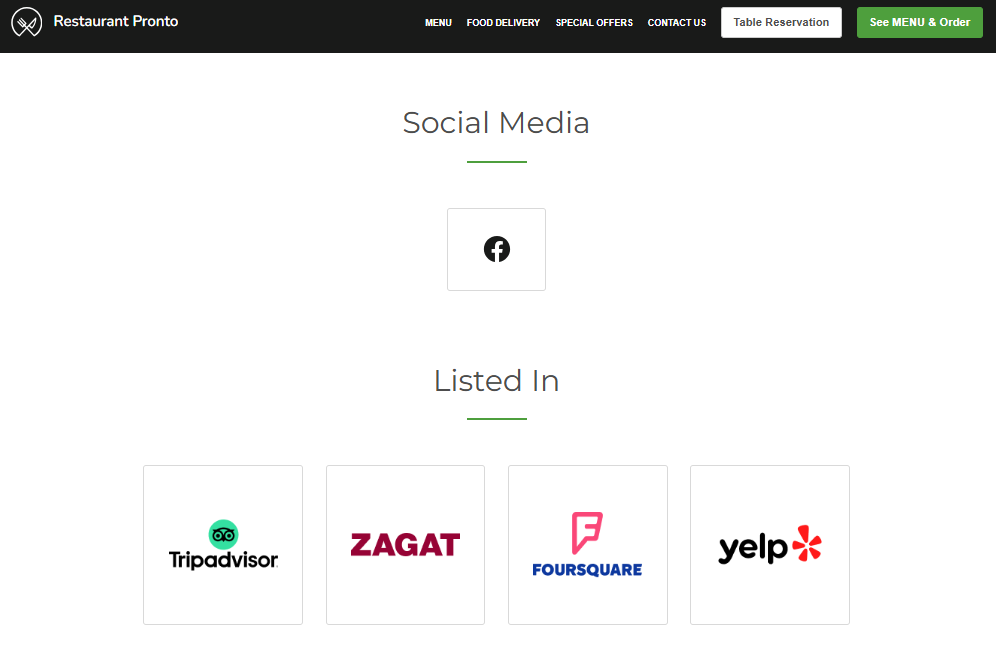
Your existing customers might already follow you on social media, so they’ll see the things you post. Someone that hasn’t visited your restaurant before, though, will probably want to look at your website first.
Linking to your social media accounts is a great idea for people who are interested to learn more about what sets you apart from other restaurants in your area. It’s never a bad idea to encourage interaction with your customers.
Boost your sales and attract more customers
Get a sales optimized website that will help you stand out from the competition
Job listings
The restaurant industry has been and is still facing a hiring crisis. If you want to find productive employees that will be part of your team long term, you can advertise your job openings directly on your website in a dedicated section.
Include the job title, requirements, necessary experience and a contact address where people can send their CV-s. This way, you can easily manage all your applications and you build trust with future team members.
You can easily add job listings section if you use our restaurant website builder with just a few clicks.
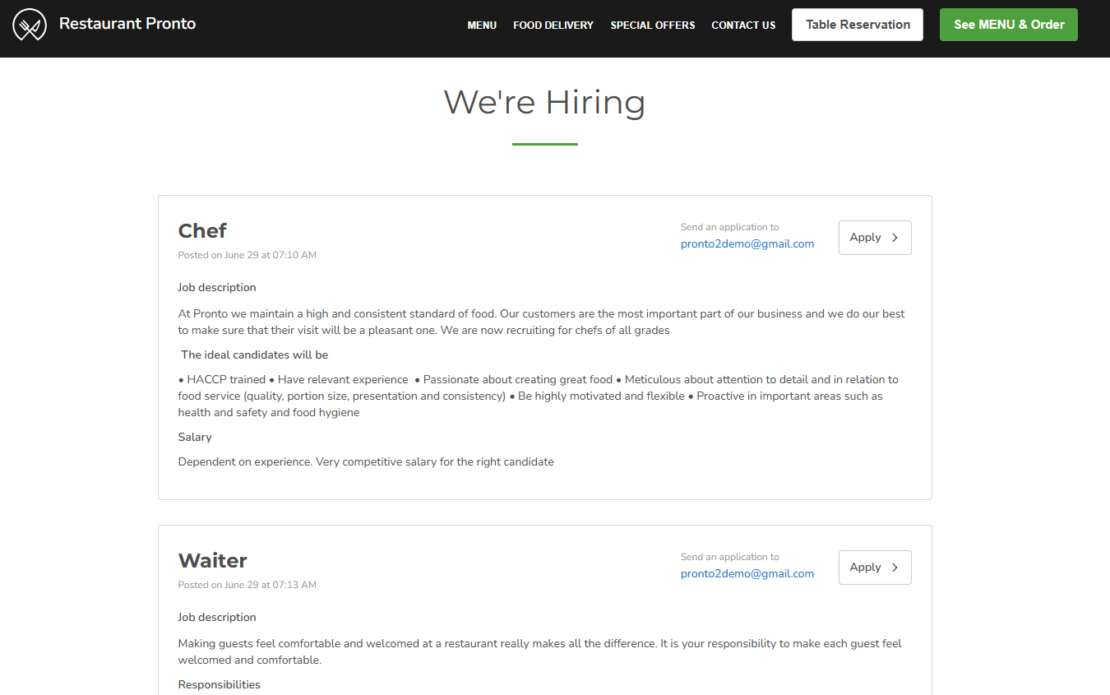
An “About us” section
While most people that reach your website, will directly look for the menu button, some of them would like to investigate further and find out more about your business. This why you should have a description for your restaurant website.
The main things to keep in mind when you write an introduction for your restaurant website is to keep it short, fill it with keywords (location, type of cuisine, popular food you serve) and include your Unique Selling Proposition (what makes your restaurant special compared to the competition).
With our restaurant website builder, adding an “About us” is easy-busy, just drag & drop the widget and customize the text.
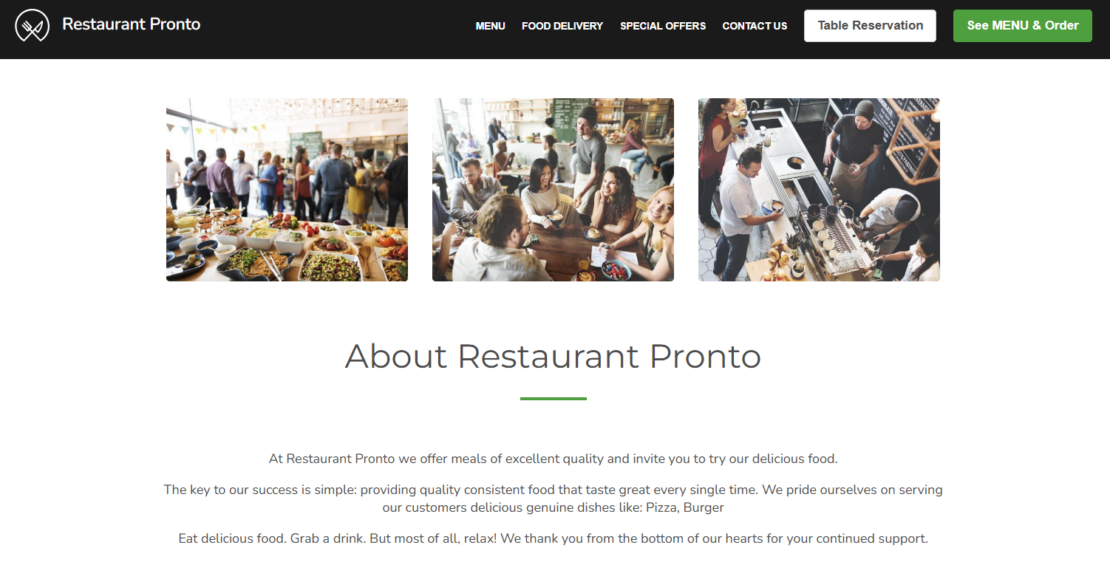
Get the Essential Restaurant Website Features to Help Your Business Thrive
Restaurants without a website can’t thrive in today’s competitive industry. Why is ours the best restaurant website builder? Because it generates a one-page restaurant website with an online ordering system included in the price.
If you want to check out a restaurant website sample created using our system, visit pronto-ny.com.
Using GloriaFood website builder, you get access to all of these essential restaurant website features:
- Fast server response time so your website loads in no time on every type of device;
- Included SSL Certificate;
- Completely SEO-optimized so you can rank high in Google searches;
- Conversion-centric with an easily browsable design that leads client to the intuitive and attractive menu.
These will boost your sales by attracting more customers and increasing your online orders. Turn yours into the best restaurant website in your area!
Sell more of your food with this highly optimized website builder
Attract all attention to your delicious food
Simply click the Get Started button at the bottom of this page to create your GloriaFood account and enjoy all the perks that come with it.
- What Makes a Good Restaurant Website?
- Most Important Features of Restaurants’ Websites
- Good Restaurant Domain Name
- Restaurant Website SSL Certificate
- Fast Server Response Time
- Correct Restaurant Schema Markup
- On-Page Restaurant SEO
- Responsive Restaurant Website Design
- Optimized Order Online Button
- Quality Food Photography on Your Website and Menu
- Content that incites clients to order
- Directions to and a Map of Your Location
- Links to Social Media Accounts
- Job listings
- An “About us” section
- Get the Essential Restaurant Website Features to Help Your Business Thrive
